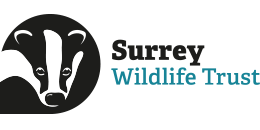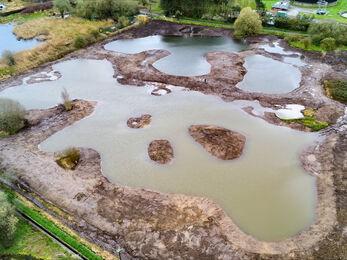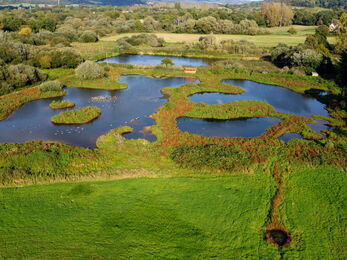Path to recovery
During the first Covid-19 lockdown in summer 2020, Keith Lightfoot took regular walks past Unstead Wetland Nature Reserve near Godalming. A wildlife enthusiast, he couldn’t help noticing how neglected the site had become and convened a small group of volunteers, including me, to cut back the overgrown footpath to an old birdwatchers’ hide. Then we cleared a culvert and started to unblock the water. Five years later, we’re still hard at work.
By summer 2025, Unstead Nature Community Group was a charitable incorporated organisation. We now have more than 200 members, who pay a small subscription to cover running costs, and welcome at least 16 regular volunteers to our weekly work party sessions. Many of us have been on Surrey Wildlife Trust (SWT) adult learning courses to improve our conservation skills and knowledge. And our little reserve is literally on the map – OS Explorer 145 now shows a blue duck symbol.
Productive partnership
Together with Thames Water, which owns the site and the adjacent sewage plant, we have restored much of the wetland habitat and have big plans for its future. This includes signing a ten-year lease that we hope will be renewed for another ten, which would take us to 25 years of management.
The relationship is mutually beneficial. When Thames does large-scale conservation work, we maintain it, which saves on contractor costs. We cooperate with the on-site team so as not to interfere with operations or damage infrastructure, and we get excellent support from the environmental specialists at head office.
Building blocks
Since we began, our volunteers have cleared encroaching willow scrub, planted 500m of new hedgerows and laid existing overgrown hedges to create natural boundaries and wildlife corridors. We use arising materials to create viewing screens and dead hedging and have planted around 3,000 trees, all donated by organisations such as Surrey County Council and the Woodland Trust.
Major projects
With help from SWT, Bug Life and a local farmer, we’ve seeded the North Meadow with wildflowers. A conservation grazing regime, with cattle munching the grass, poaching and fertilising the ground, is now encouraging the meadow to flourish.
However, some projects are too big even for our expert volunteers. Thames Water provided the heavy machinery to dig out new lagoons and low-level islands, and funded us to improve public access and build a dipping platform. This created a series of scrapes and bunds that are linked through pipework carrying water from the treatment works onto the North Meadow, and from there into the River Wey. The reserve takes a small fraction of the available water, but our monitoring shows an improvement in quality of the water that flows through the reserve.
Thames also planted a Miyawaki Forest of hazel, hawthorn and other native species, which we have tended. It is now growing fast, as it’s designed to, creating dense vegetation in a compact area.


